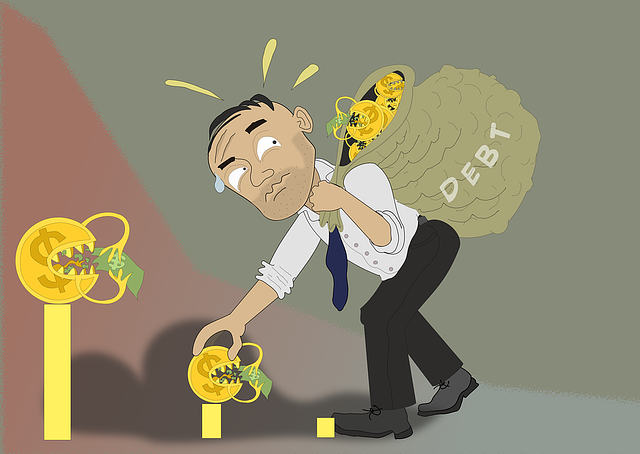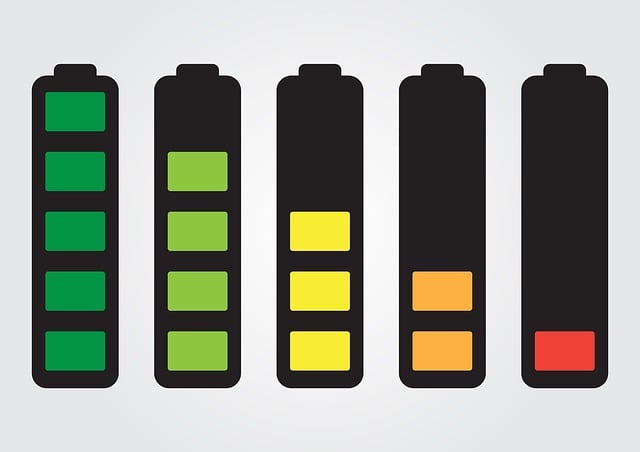Does Binance Charge Fees? An In-Depth Guide for Traders
Author: Jameson Richman Expert
Published On: 2025-09-13
Prepared by Jameson Richman and our team of experts with over a decade of experience in cryptocurrency and digital asset analysis. Learn more about us.
Embarking on a journey into cryptocurrency trading naturally raises numerous questions, with one of the most fundamental being, "Does Binance charge fees?" As an experienced trader who has navigated multiple exchanges over the years, I can affirm that understanding fee structures is crucial for maximizing your profits and minimizing unnecessary costs. In this comprehensive guide, I will delve into Binance’s detailed fee system, sharing insights from my personal trading experience, compare it with other major platforms such as Mexc, BitGet, and Bybit, and explore strategies like referral programs and fee discounts to optimize your trading expenses. Whether you’re a casual investor or a professional trader, this article aims to equip you with the knowledge to manage your costs effectively and improve your overall trading performance.

Understanding Binance's Fee Structure: A Detailed Breakdown
From my early days in trading, I quickly realized that hidden or overly complex fee structures can significantly erode profits. Binance, as one of the largest crypto exchanges globally, employs a sophisticated tiered fee system designed to reward high-volume trading and active participation in the Binance ecosystem. The standard spot trading fee begins at 0.1% for both makers (limit orders that add liquidity) and takers (market orders that remove liquidity). However, this rate is dynamic and can fluctuate based on your 30-day trading volume and BNB holdings, making it essential to monitor your account activity regularly.
The tiered structure means that as your trading volume increases—either through more frequent trades or larger transaction sizes—you can qualify for lower fee tiers, sometimes as low as 0.02% for makers and 0.04% for takers at the highest levels. For example, traders executing over 100 BTC worth of trades per month might initially pay 0.1%, but with increased volume, their fees could drop significantly. This incentivizes traders to execute larger or more frequent trades or to increase their holdings of Binance Coin (BNB). Holding BNB in your account allows you to pay trading fees at a discounted rate—often 25% less—by using BNB directly during transactions.
Over the years, I’ve observed that traders who actively utilize BNB and push their volume into higher tiers see substantial reductions in fees, which directly boost net profitability. For instance, a trader regularly executing large trades can save hundreds or even thousands of dollars annually just by leveraging this tiered structure and fee discounts. Combining volume tiers with BNB fee payments is a powerful strategy for cost-conscious traders seeking to maximize their margins.
Additional Fees and Advanced Features: What Traders Need to Know
Beyond spot trading, Binance offers a broad ecosystem that includes futures, margin trading, options, staking, savings, and more. Each of these avenues has its own fee structure, often more complex than spot trading. For example, Binance Futures, which allows trading with leverage, charges starting fees at 0.02% for makers and 0.04% for takers—comparable to spot trading but with additional costs like funding rates, overnight borrowing fees, and liquidation risks.
Funding rates are periodic payments exchanged between long and short positions based on prevailing market conditions—these can either add to your trading costs or generate additional income, depending on your position. When holding leveraged positions overnight, traders should account for these rates, which can fluctuate daily. Additionally, margin trading involves borrowing assets, which incurs interest payments that impact overall profitability.
Deposit and withdrawal fees are another critical aspect. While deposits are typically free or incur minimal charges, withdrawal fees are variable and depend largely on network congestion and blockchain transaction fees. For instance, withdrawing Bitcoin during periods of high network congestion can cost significantly more than during off-peak times. Planning your withdrawals during periods of low network activity or consolidating multiple small withdrawals into fewer larger transactions can save you money. Binance also periodically updates its fee schedule, so staying informed via their official announcements helps manage costs proactively.
Comparing Binance with Other Major Exchanges: Cost and Features
To optimize trading expenses, I explored other prominent platforms such as Mexc, BitGet, and Bybit. Mexc offers a very competitive fee structure—often starting at 0.1% for spot trades—with additional discounts for high-volume traders or those holding their native token (MEXC Token). They also run various community reward programs that can augment the value you get from trading fees (Mexc Referral Link).
BitGet provides a compelling alternative, especially with its lucrative referral system (BitGet Referral Program). Their trading fees are similar to Binance’s, starting at 0.1% but with added benefits such as tiered discounts for large traders, bonus schemes, and promotional trading competitions. These incentives make it a cost-effective choice for traders looking to diversify their platforms or capitalize on promotional offers.
Bybit, known for its user-friendly interface and active community, offers competitive fees with regular promotions, such as zero-fee trading days or bonus cashback programs (Bybit Referral Link). While Binance often leads in overall cost-effectiveness for high-volume traders due to its extensive tiered structure, each platform has unique advantages—such as specific asset classes, innovative trading tools, or superior customer support—that may better suit different trading styles or strategic needs.

Maximizing Benefits from Referral Programs and Promotions
One of the most effective methods I’ve used to reduce trading costs is leveraging referral programs. Binance’s referral system enables you to earn commissions by inviting others to trade via your unique link. For example, you can register through this link: Binance Referral Link. Beyond Binance, platforms like Mexc, BitGet, and Bybit also offer attractive referral schemes, some providing sign-up bonuses or tiered commission rates for active promoters.
These programs are usually tiered—meaning that the more traders you refer and the higher their trading volumes, the greater your earned commissions. Sharing referral links within online communities, on social media, or through targeted marketing can generate a passive income stream that effectively offsets your trading fees over time. Monitoring each platform’s rules, payout structures, and promotional periods ensures you maximize your earnings without surprises. Additionally, some platforms offer affiliate dashboards and analytics to track your performance and optimize your outreach efforts.
Why Paying Attention to Fees is Critical in Crypto Trading
Initially, I underestimated how fees could dramatically impact overall profitability—especially during volatile conditions or when executing numerous small trades. As I delved deeper into the mechanics—guided by comprehensive resources like this detailed guide—I realized that even marginal differences in fee rates could turn otherwise profitable trades into losses. Managing costs proactively is vital for sustainable trading.
In high-frequency or day trading strategies, where margins are thin and volume is high, neglecting fee implications can erode gains rapidly. Consistently monitoring platform fee updates, timing trades to coincide with promotional discounts, and leveraging fee-reduction tools like BNB payments or tiered discounts are practices that can significantly improve your bottom line. Ultimately, fee management is not just operational but a core component of a disciplined trading approach—one that preserves capital and enhances profitability over the long term.
Practical Tips to Minimize and Manage Trading Fees
Drawing from my trading experience, here are some actionable tips for reducing costs effectively:
- Use Binance Coin (BNB) for Fee Payments: Paying trading fees with BNB can provide discounts of up to 25%, especially valuable for traders who frequently execute multiple trades daily. Always ensure your BNB balance is sufficient before trading to maximize savings. Keep an eye on Binance’s announcements as they occasionally update the discount rates or introduce new BNB-related promotions.
- Capitalize on Promotions and Timing: Stay alert to promotional periods, seasonal campaigns, and special fee discount events announced by Binance and other exchanges to maximize savings. These often coincide with major market events or exchange anniversaries. Using scheduled trades during these periods can significantly decrease your overall trading costs.
- Optimize Withdrawals: Plan large withdrawals during times of low blockchain congestion to benefit from lower network fees. Utilize blockchain explorers and fee estimation tools (like Mempool.space) to select optimal times and cryptocurrencies for withdrawal, such as using stablecoins on low-fee networks like Tron or Binance Smart Chain.
- Diversify Across Platforms: Use multiple exchanges to exploit varied fee structures, promotional offers, and asset classes. This diversification reduces reliance on a single platform and helps capitalize on specific platform advantages for different trading strategies or asset types.
- Utilize Analytics and Tools: Use tools like Coin Tracker, TradingView fee calculators, and dedicated fee analysis platforms (Fee Optimization Tools) to identify cost-effective entry and exit points, avoiding unnecessary trades and minimizing fees associated with suboptimal timings.
Staying well-informed through community forums, official platform updates, and in-depth guides is essential for adapting to changing fee policies and maintaining cost efficiency. Regular review and strategic planning ensure that your trading costs remain manageable, directly contributing to enhanced profit margins and sustainable growth.

Conclusion: Mastering Fees for Better Crypto Trading Outcomes
From my extensive experience, I’ve learned that understanding whether Binance charges fees is just the starting point. The real advantage lies in actively managing and minimizing those fees through tiered discounts, strategic BNB utilization, participation in referral programs, and timing your trades effectively. Comparing Binance with platforms like Mexc, BitGet, and Bybit highlights that each exchange offers unique benefits tailored to different trading strategies and objectives.
Effective fee management is fundamental to long-term profitability in crypto trading. By staying informed about platform policies, leveraging discounts, and diversifying your trading approach, you can keep costs low and profits high. Continuous learning, diligent planning, and proactive fee optimization turn what might seem like minor costs into a significant advantage—giving you a competitive edge in the rapidly evolving crypto landscape. Happy trading!